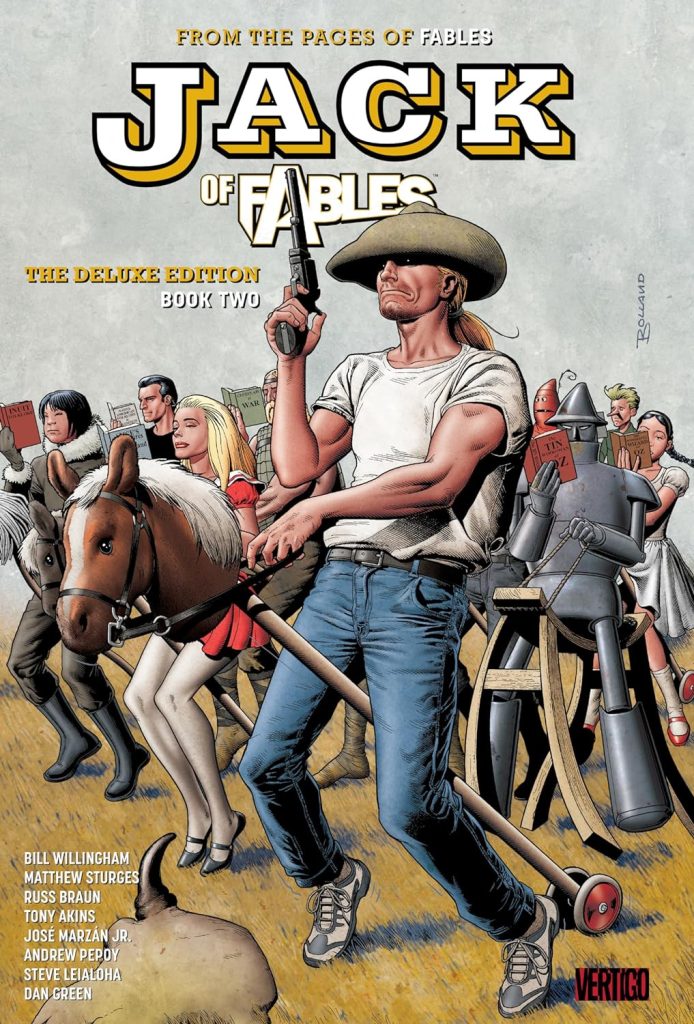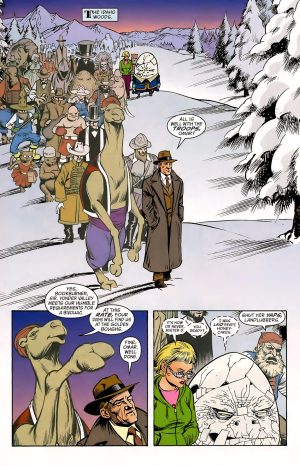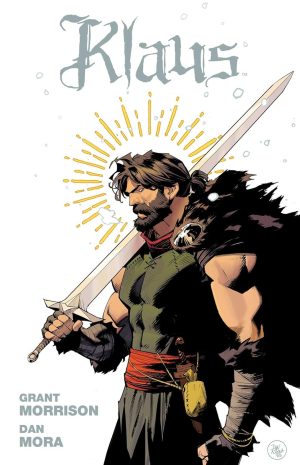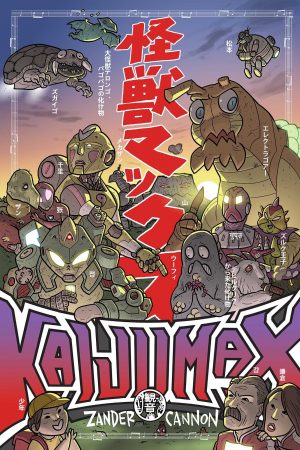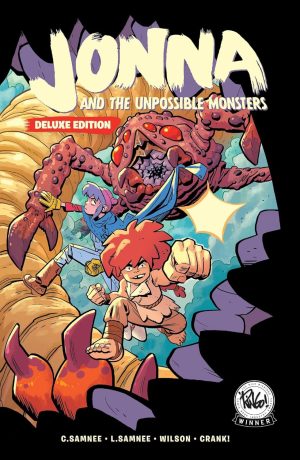Review by Frank Plowright
Because Jack of Fables originated in the densely plotted Fables universe there’s likely to be an assumption that it explores similar territory. It doesn’t. This is where Bill Willingham and co-writer Matthew Sturges supply madcap comedy, in this instance with the lunatic taking charge of the asylum. Jack is a wily conman living by his wits and escaping more dead ends than anyone with his lack of skill and charm has any right to. His major talent is persuasion, and although called his sidekick, the primary thing Jack has going for him is the friendship of Gary, able to bring inanimate objects to life.
Willingham is credited as co-writer throughout, but even more so than Book One this lacks the finesse, the wit and the achievement associated with his other writing. Even accounting for Jack’s adventures being deliberately different, it encourages the supposition that Willingham’s participation is minimal at best as the standard falls well below his simultaneous work on Fables.
This combines the paperback volumes Americana, Turning Pages and The Big Book of War, which turn Jack’s world upside down prior to The Great Fables Crossover. Jack starts by exploring the myths and legends of the USA, although in extremely cursory fashion, and ends not entirely sure who he is. There’s a co-starring role for Bigby from Fables in a look back to Jack’s robbing days in the 1880s, Jack sabotaging a version of Hamlet, which really isn’t as funny as the creators think, and a very lazy and convenient ending to the ‘Americana’ storyline. It’s reprised more openly and dramatically in what follows.
By this stage in the Jack of Fables run, an accommodation has been reached about the art. Russ Braun now alternates on story arcs (sample page), and the extra time available means art produced by Tony Akins now looks better. He doesn’t have Braun’s talent for designing an attractive looking page, but his characters now no longer have strange looking faces, and he has the time for the massive amount of people the final story requires.
Book One introduced the concept of the Literals, also near enough immortal and personifying literary concepts. At their simplest it’s Gary, the Pathetic Fallacy, able to bring inanimate objects to life, and Revise and his mania for altering stories to reduce the power of Fables. The major threat here is Bookburner, whose mission is to wipe out Fables entirely, and who’s now gathered a large enough army to attack Revise and others at Golden Bough. It needs length, but while Jack is reduced to brief scenes until the end, it’s spread too thin despite being a game-changing arc.
If you really, really, really buy into the idea of Jack actually being a funny leading character, then there may be value in this expensive hardcover. The mildly curious should stick to used copies of the out of print paperbacks. From here Jack’s continuity heads into Fables: The Great Fables Crossover before Book Three.
